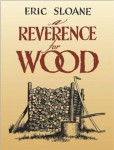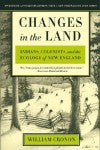It seems that wood and manliness have always gone together. (OK, get your laughs out…better?) Seriously though, there seems to be a draw to wood and trees like no other object I can think of. Sure, iron and stone have their place, but they are not organic. They don’t grow and have a history, a story, in the same way a tree does. You don’t walk into the forest and choose iron or granite to build your home like you can a tree. We live with trees in a sense. We pick their fruit, we nurture them, weather storms with them, sit beneath their shade, and wonder at what they have seen pass with their seasons as if they are an elder of sorts. I know people who have cried when they found out an old tree outside their childhood home had been cut down though the house had been removed for many years.
I believe that many men still feel this connection but I also believe our numbers are declining. In our world of concrete, plastic, glass and drywall, we don’t really think about wood in the same way people did only three or four generations ago. Being able to name the trees in our yard is a step in the right direction, but knowing and respecting the various properties of wood species and being able to work with it is where we need to be. This isn’t just to impress the fellas with the difference between a red oak and a white oak, it is actually much deeper than that; responsible conservation starts with reverence and admiration. It is most manly to care for our environment, not out of fear, but out of respect and gratitude.
When My Love Began
My grandfather taught me early on some of the differences in the trees that grew in our part of the country. Oaks, sycamores, maples, pines, and the like. We of course had pecans and walnut trees as well as a small chestnut tree which dropped the most painful, spiky round balls. Now that I think of it, we had an orchard of various apple, plum, and peach. However, except for maybe the sycamore, I don’t think I could have named any of those trees apart from the fruits they produced.
I remember being little and having a connection with one large oak tree on my grandparents property. I would talk to it, and share my troubles with it. I knew it wasn’t a person and I don’t believe in any kind of spiritual connection with trees or anything of that sort, but I did find it comforting. Maybe it was my way at a young age to talk to God through his creation.
When I Started Learning
I really began the process of seriously studying wood and trees when they became practical to my world. I got the idea a few years ago to make a bow. It was something I’ve wanted to do since childhood, and while I had made some crude (but fun) attempts, I wanted to make a real bow that was worthy of hunting. I began researching every unique or straight tree I saw to see if it had been used by Native Americans to craft a bow. This would lead to finding out more information about the tree, what is was good for if not a tool for hunting. Certain trees would be great for canoes, others for paddles, some for glue or syrup and so on. This has started a course of learning and passion that has not yet ended.
Looking to the Past
I sometimes think about the early settlers of America. When they came off the ships and first stepped foot into our virgin forest, and saw such a vast cornucopia of trees and the grandeur of our unmarred canopy. I think of how it must have felt, to see their hopes realized, and the promises those woods would keep for the generations to come. It meant more to them than we can we can grasp being on the other side of that age.
William Wood, the first Englishman to write a detailed account of New England ecology in 1634, describes our pristine woods in a poem from his book New England Prospects.
Trees both in hills and plaines, in plenty be, The long liv’d Oake and mournefull Cypris tree, Skie towring pines, and Chesnuts coated rough, The lasting Cedar, with the Walnut tough: The rozin dropping Firre for masts in use, The boatmen seeke for Oares light, neate growne Sprewse [spruce], The brittle Ash, the ever trembling Aspes, The broad-spread Elme, whose concave barbours waspes… The Diars [dyer’s] Shumach [sumac], with more trees there be, That are both good to use, and rare to see– William Wood, New England Prospects (1580-1639)
Books for Tree Enthusiast
Here are a few books I have either read or have at least looked through. They are filled with wisdom and stories of old.
A Reverence for Wood – Eric Sloane

Anything by Eric Sloane is worth owning. His illustrations and wonderfully easy style of story telling make his works a pleasure to read and view. This book moves through the timeline of wood in American history while illustrating the properties of various types of wood, even how different joins were used over the years.
American Canopy: Trees, Forests, and the Making of a Nation – Eric Rutkow

Eric Rutkow does an incredible job telling the story of America’s 400 year history and inseparable relationship with her trees. He includes stories of many notable historical events as well as past president’s love for trees and the protection of our forests.
American Chestnut: The Life, Death, and Rebirth of a Perfect Tree – Susan Freinkel

The American Chestnut tree was considered the “King of Trees” in America and for good reason. It grew quickly, produced fruit (nuts) faster than oaks, provided food in abundance for every animal, was rot resistant and incredibly tough. If you read the Foxfire series of books you will hear the stories of how the hogs used to roam the mountainside and fatten up on the chestnuts. Unfortunately, a blight was introduced to the species in the early 1900’s, destroying nearly 2 billion chestnut trees within 40 years. By 1940 the once grand tree was all but extinct. Only a few true American Chestnut trees remain. Efforts are underway to repopulate the forest with hybrids.
Changes in the Land: Indians, Colonists, and the Ecology of New England – William Cronon

I am including this book mostly because I desire to read it myself. It looks fascinating and seems to be the kind of book a tree (and or history) enthusiast would enjoy.
Final Thoughts
As you may have noticed, this post is a bit different from the usual. I wasn’t sure how to put these thoughts into words that would implore other men to grow in this area, but I do think it is important. We have become disconnected from our land and ignorant in so many respects to how nature works. When that happens, how can we expect people to care about the environment in the natural way we should? Rather we push people with shame and fear tactics into pretending to care.
Plus, when you begin developing a passion for trees and wood, this world you live in becomes much more interesting. When you see a Black Locust tree, growing on a hill near your mall and you consider how you might chop it down and create a bow, or how you might be the only person who has noticed the rare (in these parts of North Carolina) specimen and how you should just leave it there to see how it grows…well you begin to see things differently.

